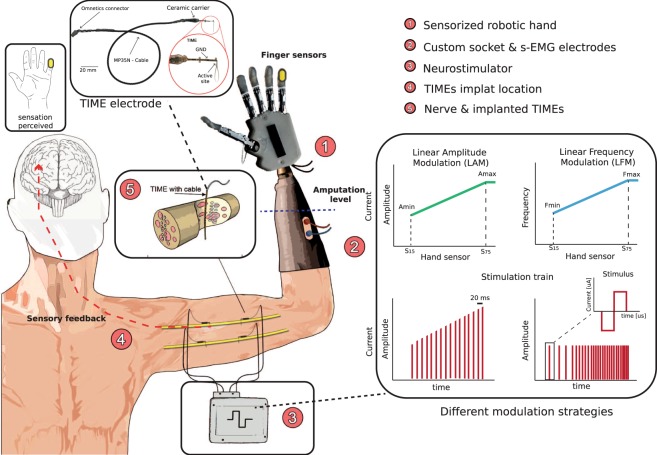Figure 1.
Bidirectional hand prosthesis. The upper limb amputees wore a robotic prosthesis equipped with a system for restoring sensory feedback through intraneural stimulation conveyed by TIME electrodes. The prosthesis was equipped with a custom socket and 2 force sensors. The readout from these sensors was transmitted to an external controller, which transduced it in stimulation parameters, modulating linearly the amplitude (LAM, average amplitude 150 ± 57.7 μA for Subject 1 and 250 ± 57.7 μA for Subject 2) or the frequency (LFM, average frequency 30 ± 23.1 Hz for Subject 1 and Subject 2) of the stimulation trains being injected. These instructions drove the activity of an external stimulator, which was connected to four TIME electrodes, previously implanted in the median and ulnar nerves. The neural interfaces were inserted transversally in the nerve, penetrating the fascicles.

